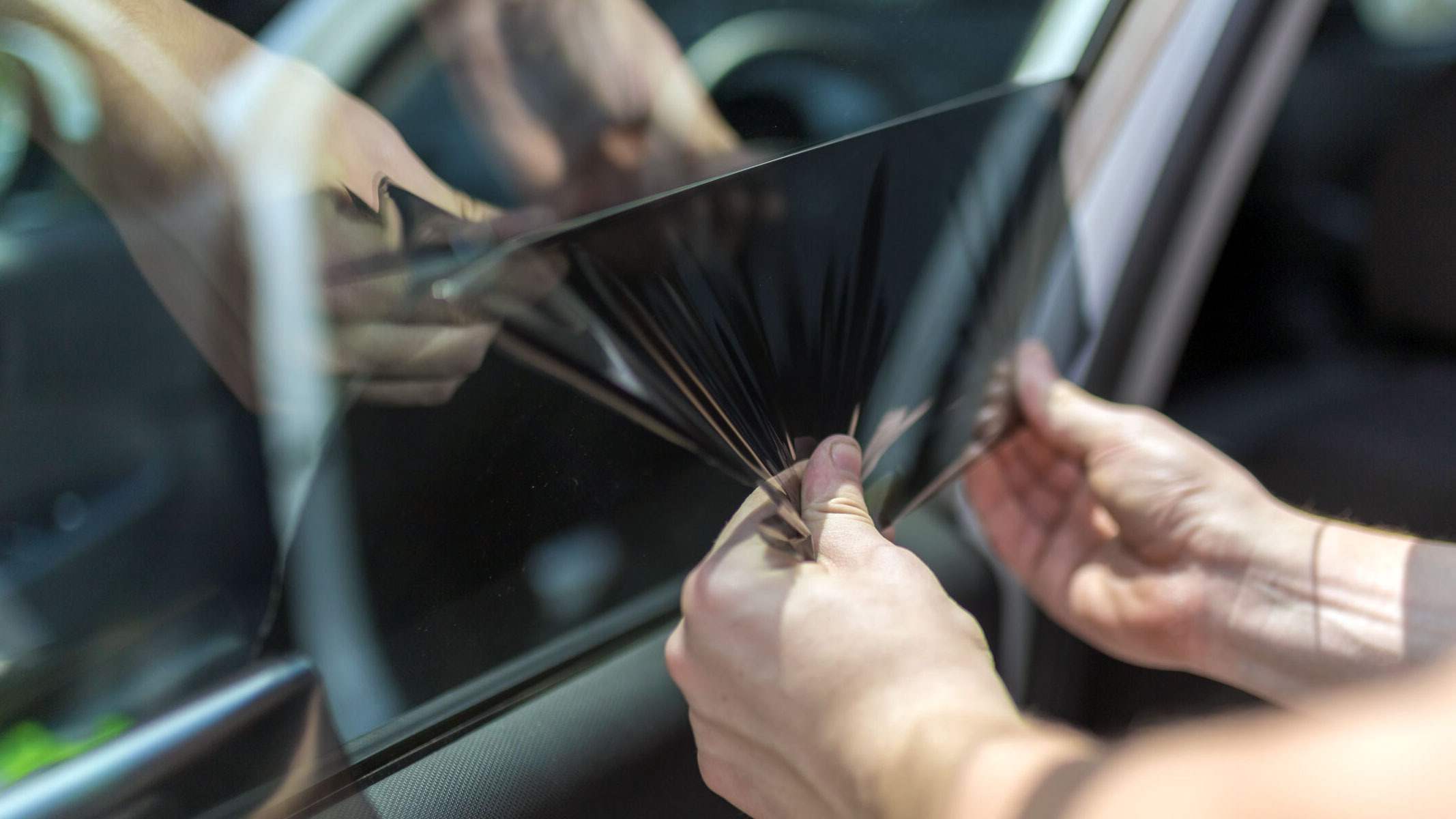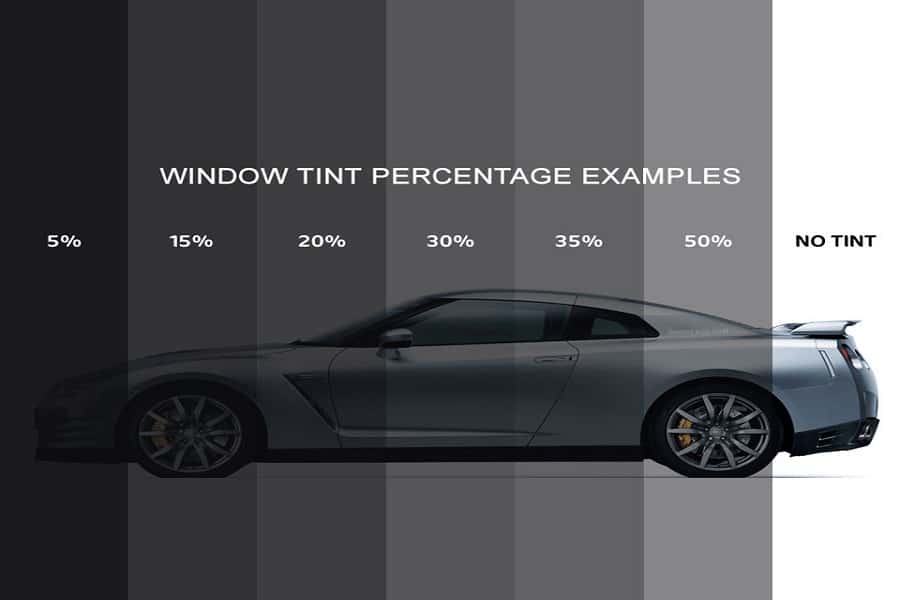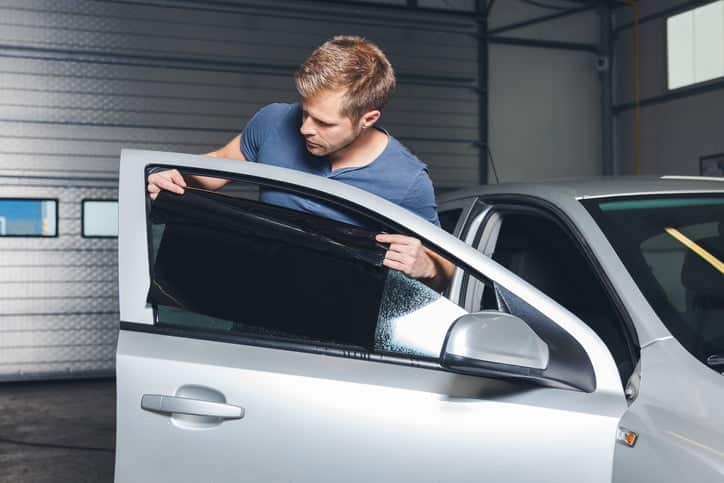The Environmental Benefits of Choosing Car Glass Tinting for Your Green Vehicle
A Comprehensive Overview to Comprehending Vehicle Home Window Color and Its Benefits
Automobile home window tinting offers greater than simply an aesthetic objective for vehicles. It uses numerous kinds, each with distinct features and advantages. Understanding these alternatives, along with legal policies and upkeep suggestions, is crucial for any kind of lorry proprietor. The benefits may substantially improve driving comfort and lorry long life. As one discovers the subtleties of window tinting, the inquiry develops: what kind of tint is finest suited for individual demands?
Comprehending Vehicle Window Tint: What It Is and Just how It Functions
Vehicle home window color acts as a protective obstacle that improves car aesthetics while providing useful benefits. This thin film is related to the indoor surface area of auto home windows, lowering glow and obstructing unsafe ultraviolet (UV) rays from the sun. By filtering system sunlight, vehicle home window tint aids to regulate the interior temperature level of the car, resulting in increased comfort for passengers and reduced dependence on air conditioning.Additionally, it secures the car's inside from fading, preserving both furniture and control panel products. The tint can likewise boost privacy, making it more tough for outsiders to see inside the vehicle. Moreover, particular types of home window color can increase safety; in the occasion of an accident, the film aids hold destroyed glass with each other, minimizing the risk of injury from flying shards. Overall, car home window color offers both aesthetic and useful functions, making it a preferred choice amongst car proprietors.
Sorts Of Home Window Color: An Introduction of Options
When thinking about home window tint choices, several kinds are offered, each with unique features. Colored, metalized, and ceramic home window colors use differing degrees of warm rejection, UV security, and visual appeal. Comprehending these distinctions can assist vehicle proprietors make educated choices based on their demands and choices.
Dyed Window Color
Colored window color stands for a prominent choice amongst cars and truck proprietors looking for a effective and budget friendly way to boost their automobile's appearances and personal privacy. This type of tint is developed by placing a layer of color between a glue layer and a protective finish, causing a darkened look that reduces glow and improves aesthetic comfort. While colored window tint effectively obstructs unsafe UV rays, it may not use the very same level of warmth rejection as various other color types. Furthermore, its shade can fade gradually, possibly reducing its performance. Regardless of these downsides, dyed window tint remains preferred for its cost-effectiveness and ability to offer a sleek, trendy appearance to different vehicle versions.
Metalized Home Window Color
Metalized home window tint provides a balance of style and capability, making it a prominent selection amongst auto proprietors. This sort of color includes metallic fragments within the film, enhancing both visual appeal and heat being rejected. The reflective quality of metalized color aids to decrease glow and boost personal privacy, while likewise giving UV protection, which safeguards the car's interior. Additionally, metalized window tint can reinforce window strength, potentially protecting against smashing during accidents. Nonetheless, it is necessary to keep in mind that the metallic elements can hinder digital signals, such as general practitioner and cellular phone function. Generally, metalized window tint supplies a reliable remedy for those looking for a combination of sunlight, look, and sturdiness defense for their automobiles.
Ceramic Window Color
Ceramic window tint stands for an innovative alternative in the spectrum of automotive window films, providing distinctive advantages over standard colors. Unlike colored or metalized films, ceramic colors use innovative ceramic bits, which successfully deny warm and UV rays without endangering exposure. This technology guarantees that cars remain cooler, minimizing reliance on air conditioning and enhancing gas performance. Furthermore, ceramic home window tints are less most likely to conflict with electronic devices, such as general practitioner or mobile signals, making them a functional choice for contemporary automobiles. Their longevity and scratch resistance contribute to a much longer life expectancy contrasted to other kinds of colors. Overall, ceramic home window tint provides superior performance, comfort, and protection, making it a favored choice for critical automobile proprietors.
Advantages of Vehicle Window Color: Beyond Visual Appeals
While lots of people associate car window color with boosted style, its advantages extend much beyond simple visual appeals. One significant advantage is heat decrease; home window color can block as much as 99% of dangerous UV rays, keeping the indoor colder and protecting furniture from fading. This not just improves convenience throughout warm climate yet also decreases dependence on air conditioning, leading to boosted gas efficiency.In addition, auto window tint offers an added layer of privacy and protection. Colored windows make it challenging for outsiders to see inside the car, which can discourage burglary and shield valuables. Additionally, numerous colors reinforce the glass, lowering the likelihood of shattering in the occasion of a crash, consequently boosting safety.In addition to these practical advantages, car home window color can likewise add to glow decrease, improving visibility for guests and chauffeurs alike. This complex approach to comfort and safety and security makes home window tint a useful investment for vehicle owners.
Legal Factors To Consider: Tinting Rules by State
Before dedicating to vehicle window color, vehicle proprietors must browse an intricate landscape of tinting guidelines that differ by state. Each state has specific regulations regulating the permitted degrees of tint darkness and reflectivity for different windows, including windshields, front side home windows, and back home windows. These policies often consist of noticeable light transmission (VLT) percentages, which determine just how much light can pass through the colored glass.Some states permit darker tints on rear windows while restricting front side and windshield colors for safety factors. Furthermore, specific states may need a certification from the maker to verify conformity with tinting laws. Breaching these policies can result in fines, mandatory removal of the color, or both. It is vital for automobile owners to investigate their state's regulations extensively to ensure legal conformity before installing home window color. This persistance can conserve money and time in the lengthy run.
Selecting the Right Tint: Elements to Think about
When why not look here selecting the appropriate window color for a vehicle, a number of vital factors come into play. Color darkness levels, UV defense ratings, and compliance with lawful regulations are vital considerations to assure both visual appeals and functionality - Car Glass Tinting. Examining these elements will assist people make an enlightened choice that fulfills their demands and follows local laws
Tint Darkness Degrees
Selecting the proper color darkness level is important for achieving the preferred balance in between visual appeals and functionality in vehicle window tinting. Various states have varying lawful guidelines concerning color darkness, which can influence the option. Normally, tints are gauged in percentages, with reduced percentages showing darker tones. Darker colors use enhanced personal privacy and a smooth look yet can decrease presence, particularly at night. Conversely, lighter tints keep a more open feel, ensuring adequate exposure while still giving some warm and glow reduction. When making a decision, people should consider their driving practices, neighborhood legislations, and individual choices. Eventually, the ideal tint darkness why not find out more level boosts the automobile's appearance while making certain safety and compliance with lawful standards.
UV Security Score
Color darkness degrees play a substantial duty in the general efficiency of car window tinting, but another vital aspect to examine is the UV security ranking of the selected color. This score indicates the percent of dangerous ultraviolet rays that the tint can block. High-quality colors frequently give 99% or more UV protection, securing guests and the automobile's interior from sun damage. Long term direct exposure to UV rays can lead to skin problems and fading of upholstery, making a high UV defense ranking vital for health and wellness and longevity. When picking home window tint, customers ought to prioritize this score together with darkness levels to ensure maximum convenience and safety and security while driving. Comprehending these factors aids in making an informed choice when buying auto home window tinting.
Legal Rules Conformity
Recognizing neighborhood lawful laws is essential for any person thinking about car home window tinting. Each state or area has particular laws regulating the permitted degrees of tint darkness and reflectivity for various home windows. These policies usually define the noticeable light transmission portion, determining how much light can pass with the tinted glass. Non-compliance can lead to fines, mandatory elimination of the color, or concerns during automobile evaluations. In addition, some areas might have limitations on making use of particular tinting products, needing consumers to select items that fulfill security requirements. It is crucial for car proprietors to investigate their neighborhood regulations thoroughly before picking home window tint to guarantee compliance and prevent potential legal difficulties.
Setup Process: DIY vs. Specialist Providers
Exactly how does one determine between a do Go Here it yourself installation and employing professional services for vehicle window tinting? The option typically rests on budget plan, experience, and wanted outcomes. A DIY method can be cost-effective, enabling people to minimize labor expenses. It needs a certain level of ability and understanding about the tinting procedure. Those that are careful and client may locate success with DIY packages available in the market.Conversely, specialist solutions supply proficiency and top notch products, making certain a remarkable finish. Experts commonly ensure their job, providing satisfaction against prospective issues such as gurgling or peeling. Furthermore, they recognize with regional legislations pertaining to tinting, which can be complex for the ordinary vehicle owner.Ultimately, the decision reflects an equilibrium in between price, individual ability, and the expected quality of the tinting job. Each alternative has its benefits, and the most effective selection relies on specific circumstances and choices.
Upkeep Tips: Keeping Your Color in Leading Condition
Maintaining the look and capability of window tint calls for normal interest and care, specifically in differing weather condition problems. To maintain the tint, it is necessary to avoid utilizing abrasive cleaning products, which can damage or damage the film. Car Glass Tinting. Rather, soft microfiber fabrics and mild, ammonia-free cleansers ought to be made use of for cleansing the tinted surfaces.Furthermore, it is a good idea to wait a minimum of thirty days after installation prior to cleaning the home windows to enable the color to fully adhere. Auto parking in shaded areas or making use of sunshades can assist reduce the fading results of UV rays and prolong the color's life expectancy. Regular examinations for bubbles, peeling, or staining are advised, as early discovery can assist in repair services. Staying clear of severe temperature changes, such as pressing hot home windows in chilly climate, will assist keep the tint's honesty and look over time.
Frequently Asked Questions

Exactly How Long Does Home Window Tint Usually Last on a Car?
Window tint typically lasts in between 5 to 10 years, depending on elements such as quality, application, and environmental conditions. Regular maintenance and proper treatment can expand its life expectancy, making certain optimal performance and look gradually.
Can Window Tinting Damage My Auto's Original Glass?
Home window tinting, when used appropriately, does not harm an automobile's initial glass. Improper setup or low-quality materials may lead to issues like gurgling or peeling, potentially influencing the glass's stability over time.
Is Window Tinting Safe for All Types of Automobiles?

Will Home Window Tinting Gap My Vehicle Service Warranty?
The concern of whether home window tinting spaces an automobile guarantee typically depends on the manufacturer's policies. Typically, if the tint does not harm the car, guarantees commonly stay intact. However, consulting the dealership is recommended.

Can I Remove Window Color Myself if Needed?
Removing home window tint oneself is feasible, however it requires cautious attention to avoid damaging the glass. People need to use proper devices and strategies to ensure a successful elimination without leaving sticky deposit or scratches behind. While colored window tint properly blocks harmful UV rays, it may not provide the very same level of warmth rejection as other tint kinds. Ceramic window tint stands for an advanced choice in the range of automobile window films, using unique advantages over conventional tints. Prior to devoting to vehicle home window color, vehicle owners need to navigate a complicated landscape of tinting laws that differ by state. These policies usually consist of noticeable light transmission (VLT) portions, which determine exactly how much light can pass with the colored glass.Some states allow darker colors on rear windows while limiting front side and windscreen colors for safety and security reasons. Color darkness levels play a significant role in the general efficiency of vehicle window tinting, yet one more crucial element to examine is the UV defense ranking of the picked tint.